Bell has released new pictures and video of the first prototype of its Invictus 360, which it says is now over 90% complete. The advanced helicopter is the company’s entry into the Army’s Future Attack Reconnaissance Aircraft program, or FARA, where it is going head-to-head with Sikorsky’s Raider X.
The Texas-headquartered aviation company first unveiled the Invictus 360 design, which is a conventional reconnaissance and light attack helicopter primarily optimized for speed and comparatively low cost of production, back in 2019. In March, Bell representatives at the HAI Heli-Expo 2022 trade show in Dallas, Texas, said that the prototype was around 87% finished.
The pictures show that the Invictus 360 has largely taken shape, with its fuselage appearing complete, at least externally. The helicopter’s general configuration is very typical of modern armed helicopters, with the pilot and co-pilot sitting in a tandem arrangement, one behind the other, in the forward portion of the fuselage. According to Bell, its design is not optimized for radio-frequency low-observability (stealth) in any major way.
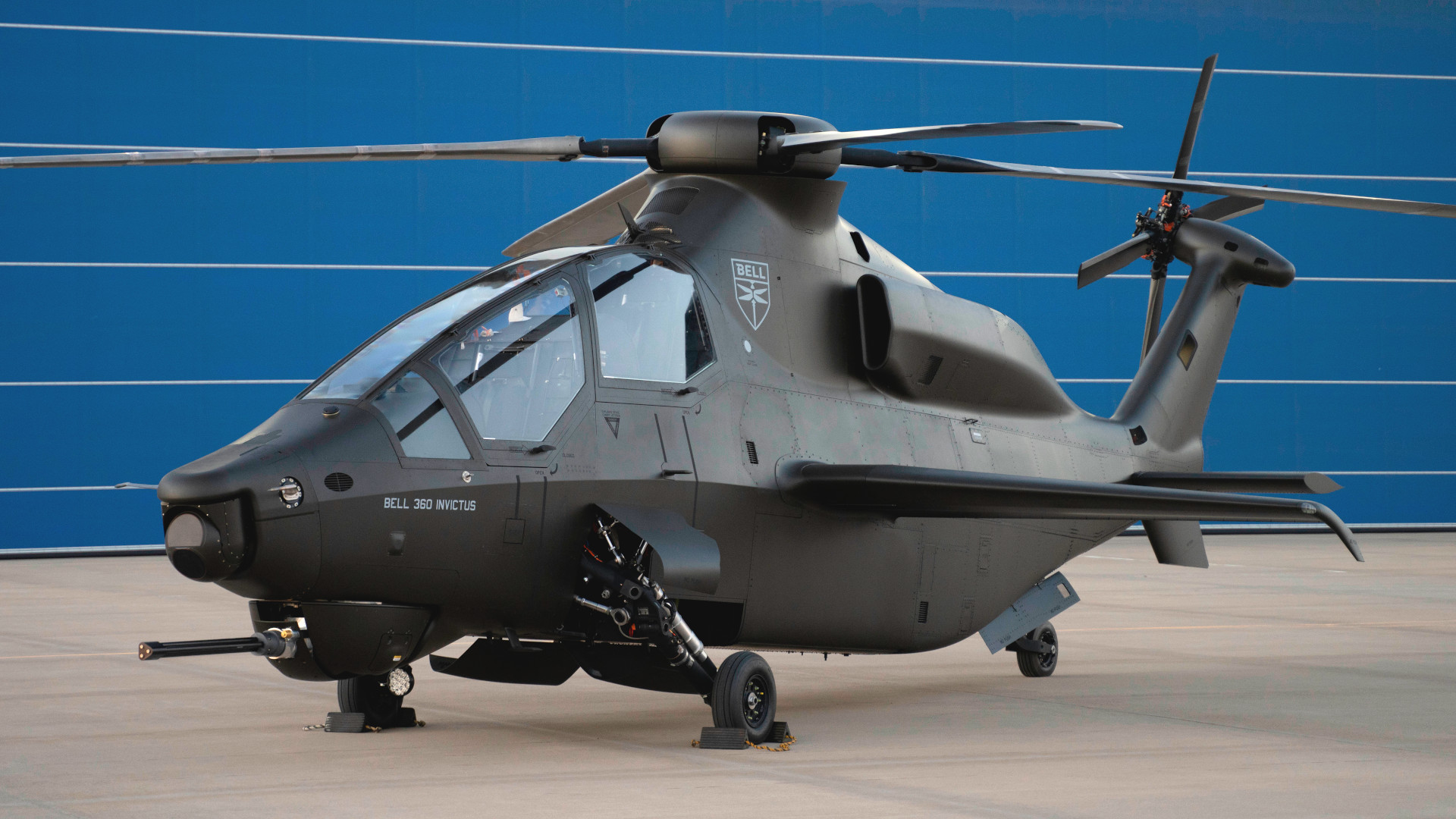
The Invictus 360’s main and tail rotors, each of which has four blades, are now installed. The helicopter’s rotor system is derived from the one on the Bell 525 Relentless helicopter. The initial design concept included a canted ducted tail rotor assembly, or fenestron, but the actual prototype has a traditional exposed tail rotor more like one on the Relentless. Bell has said this change was made to reduce weight and improve the helicopter’s performance.
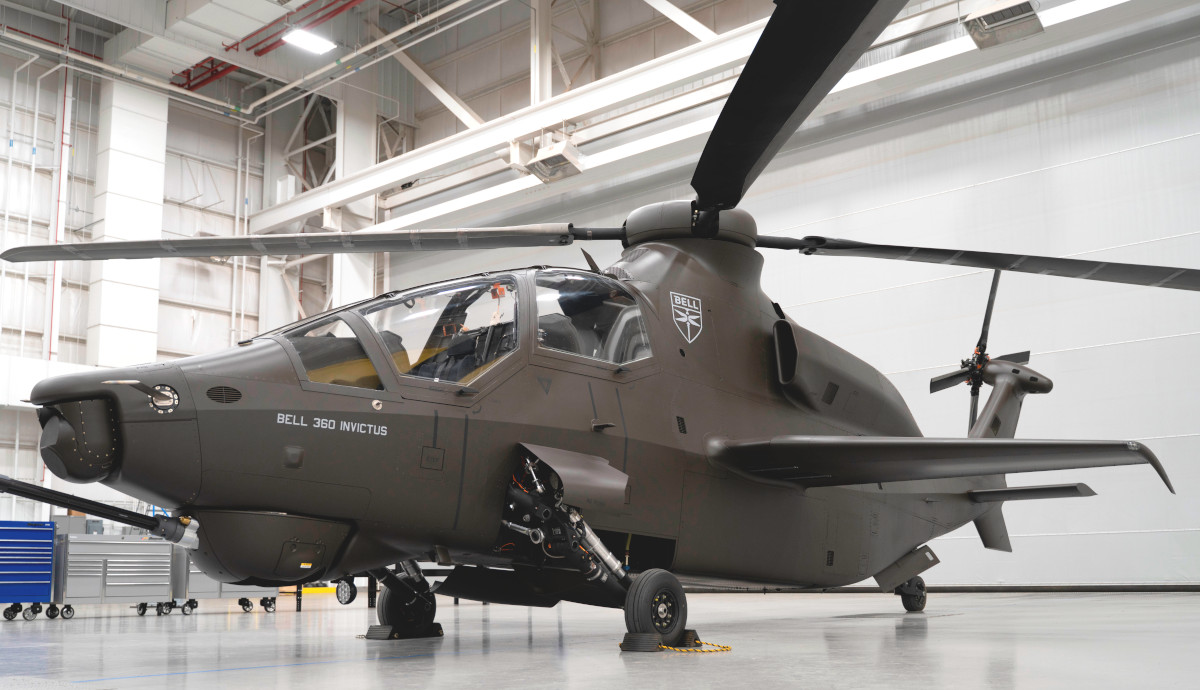
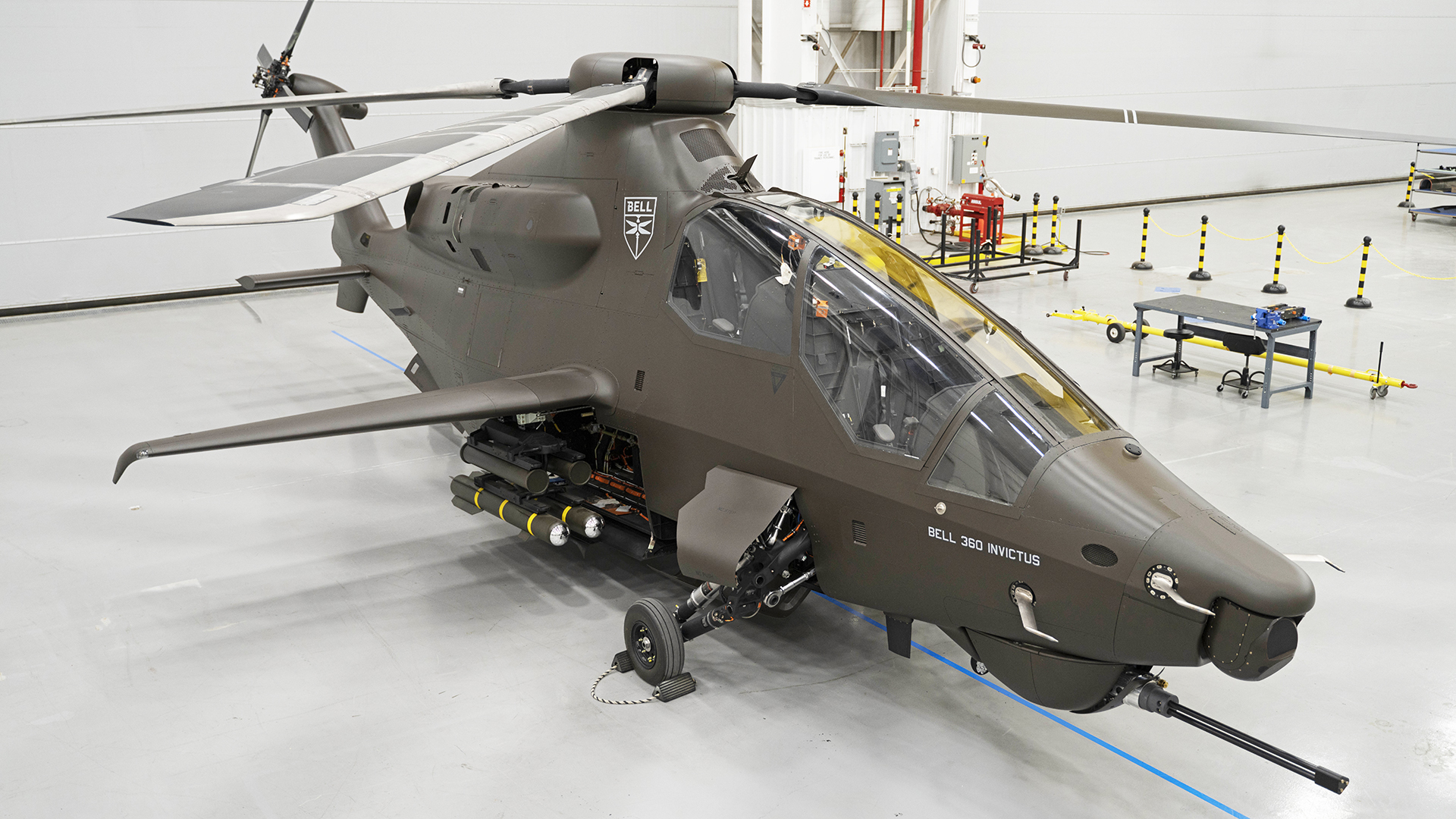
The pictures Bell put out today also show the Invictus 360 prototype with what look to be mockups of the main elements of its future armament suite. This includes an XM915 20mm three-barrel Gatling-type automatic cannon in a turret under the nose and two four-rail weapon racks, one on either side of the central fuselage. In their deployed configuration, these racks hang on rails below the helicopter’s stub wings, but they can be retracted and stowed internally when not in use for optimal performance.
What appear to be representations of either AGM-114 Hellfire missiles or AGM-179 Joint Air-to-Ground Missiles (JAGM), as well as Common Launch Tubes (CLT), appear to be loaded onto the racks themselves. CLTs, as the name indicates, can be loaded with various munitions, as well as air-launched drones. When it comes to the FARA program, the Army envisions whatever helicopter it chooses as being able to employ various types of unmanned systems, also referred to as Air Launched Effects (ALE), from these tubes. Once launched, the ALEs will able to operate in swarms to perform stand-in electronic attack, loitering strike, surveillance, and other tasks, as you can read more about here.
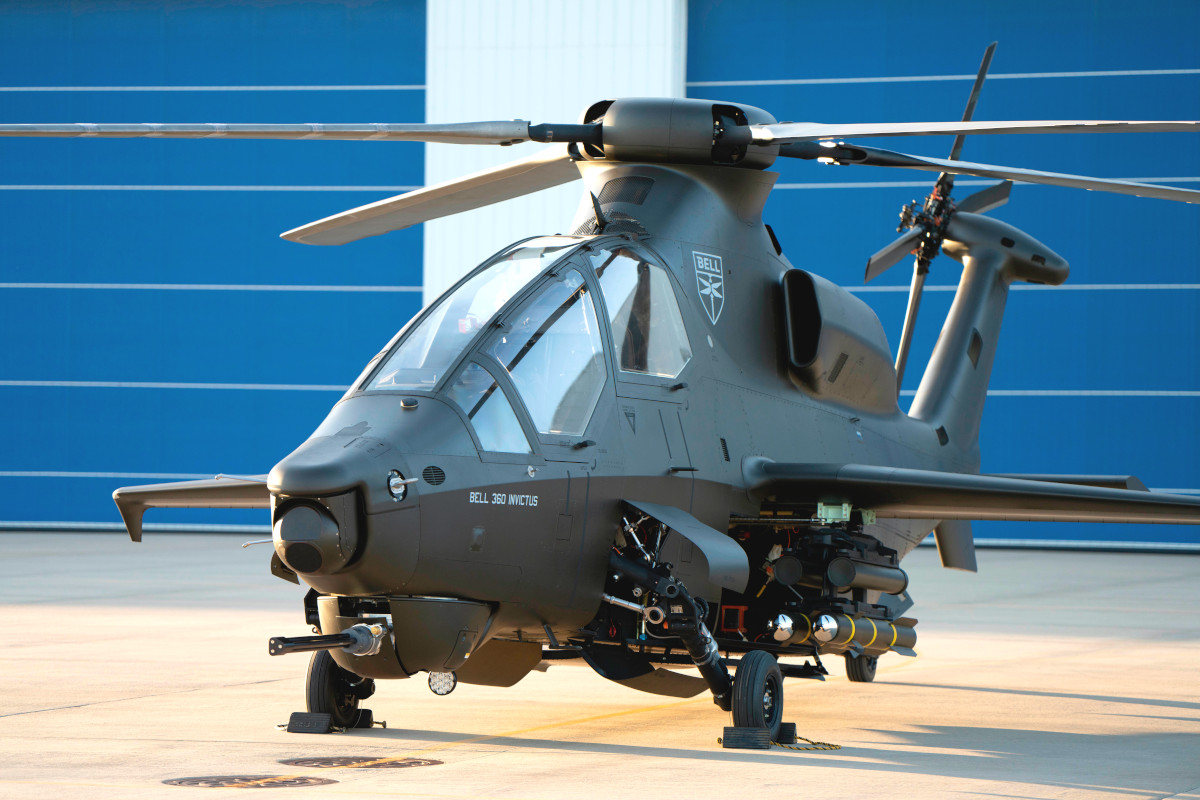
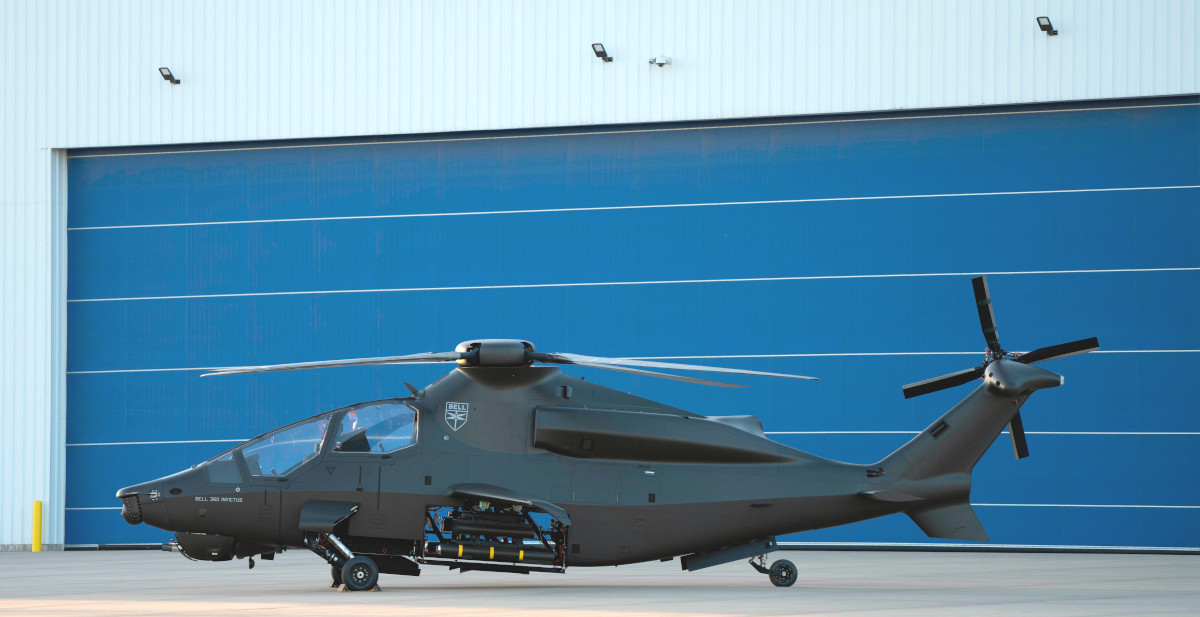
The main thing still missing from the Invictus 360 prototype now is the General Electric T901 turboshaft engine, according to a report from Key.Aero. In this design, the engine sits offset to the left of the main rotor assembly. It will also have a Pratt & Whitney Canada PW207D1 turboshaft on the opposite side to provide auxiliary power.

As of March, Bell had installed a surrogate ‘engine’ on the helicopter, “which is essentially a 3D printed engine that has allowed the company to complete form fit tests” in the absence of an actual T901, the magazine Vertical reported.
“We’re doing everything we can do right now to… stay on track,” Carl Coffman, vice president of Bell’s military sales and strategies had told reporters at the HAI Heli-Expo 2022, according to Vertical. “Once we get the engine, everything will be in line; we’ll just have a space in the aircraft for the engine to go.”
At that time, Bell said it expected to receive the T901 in November, but that if it didn’t, the overall production and flight test schedule could slip. The company has said in the past that it hopes to have the Invictus 360 take its first flight sometime in mid-2023, following a thorough ground testing campaign. The goal is for the high-speed optimized Invictus 360 to be able to reach a top speed of at least 180 knots, which is remarkably fast for a standard configuration helicopter.
The Army has said its goal is to complete the fly-off between the Invictus 360 and the Raider X in 2023 and pick a winner relatively shortly thereafter. The service wants to begin fielding operational examples of whichever design it selects in 2028.

FARA helicopters are expected to take the place of AH-64 Apache helicopters that have been serving in the attack reconnaissance role since the Army retired its OH-58D Kiowa Warrior armed scout helicopters without a direct replacement in 2014. Exactly what will happen to the AH-64s in question afterward remains to be seen, but many of them could end up removed entirely from the service’s inventory.
The performance of helicopters on both sides of the conflict in Ukraine, has raised questions about the future of the FARA program, as well as other Army helicopter modernization efforts under the umbrella of the broader Future Vertical Lift (FVL) initiative. Russian and Ukrainian helicopter fleets have both suffered significant losses, especially at the hands of shoulder-fired surface-to-air missiles, also known as Man-Portable Air Defense Systems (MANPADS). At the same time, when the Army first announced the FARA program publicly, the service said that the winning design would be required to have a defensive suite to protect it from modern air defense threats and the capabilities necessary to breach through them.
No matter how the FARA program ultimately proceeds, Bell is making steady progress toward finishing the Invictus 360 prototype as it looks toward the type’s possible first flight in 2023.

Contact the author: joe@thedrive.com
